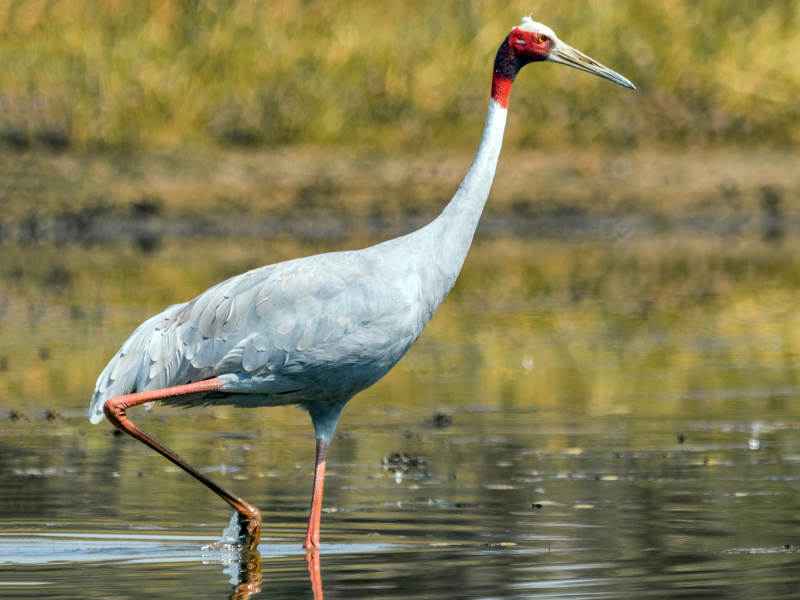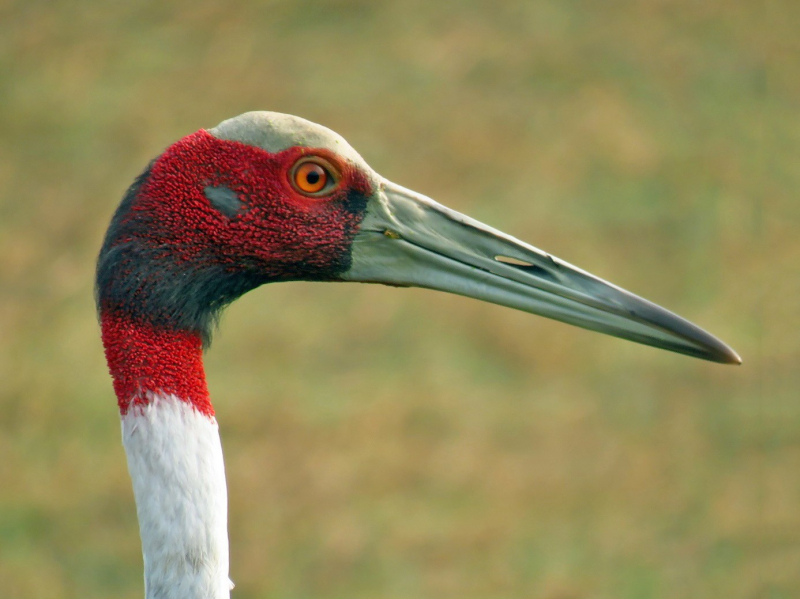Sarus Crane

The Sarus Crane (Antigone antigone) is a large nonmigratory crane found in parts of the Indian subcontinent as well as Southeast Asia, and Australia. The tallest of the flying birds, standing at a height of up to 1.8 m, is a conspicuous species of open wetlands in South Asia, seasonally flooded Dipterocarpus forests in Southeast Asia, and Eucalyptus-dominated woodlands and grasslands in Australia.
The contrasting red head and upper neck of the sarus crane, which is often grey in color, help to differentiate it from other cranes in the area. They hunt for roots, tubers, insects, crustaceans, and small vertebrate prey in marshes and shallow wetlands. They establish lifelong pair connections and defend territories, where they engage in territorial and courtship displays that involve loud trumpeting, jumps, and dance-like movements. They are revered as representations of marital fidelity in India, where it is said that they pair up for life and mourn the loss of their partners to the point of starvation.











